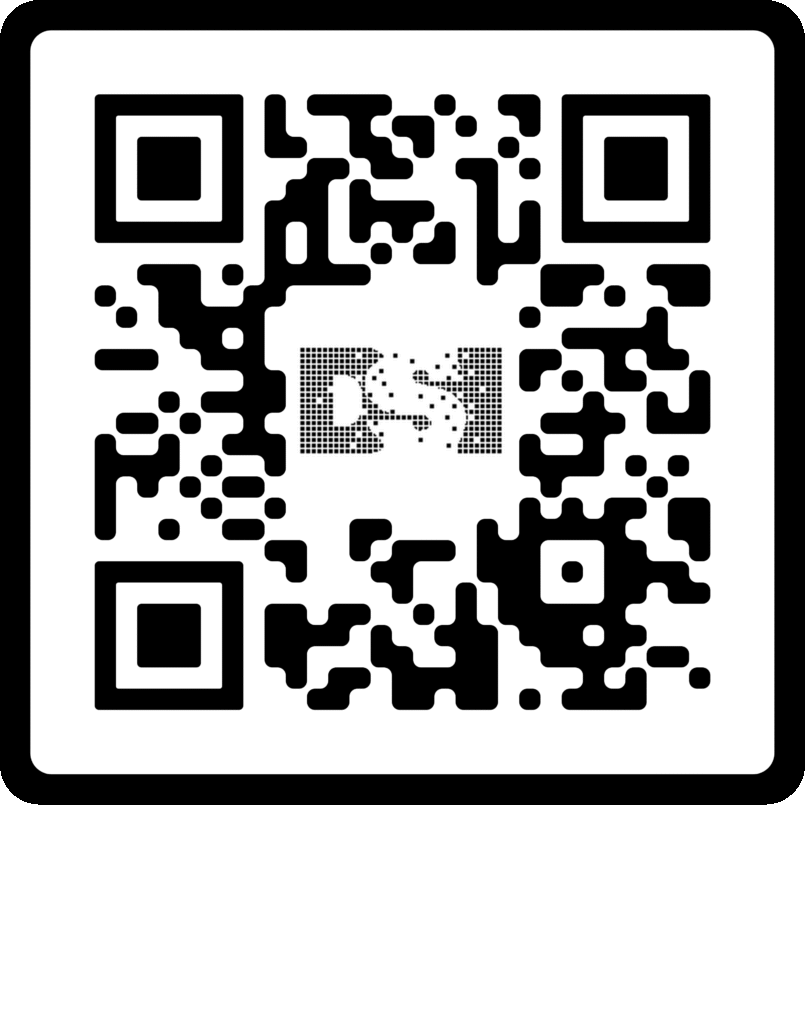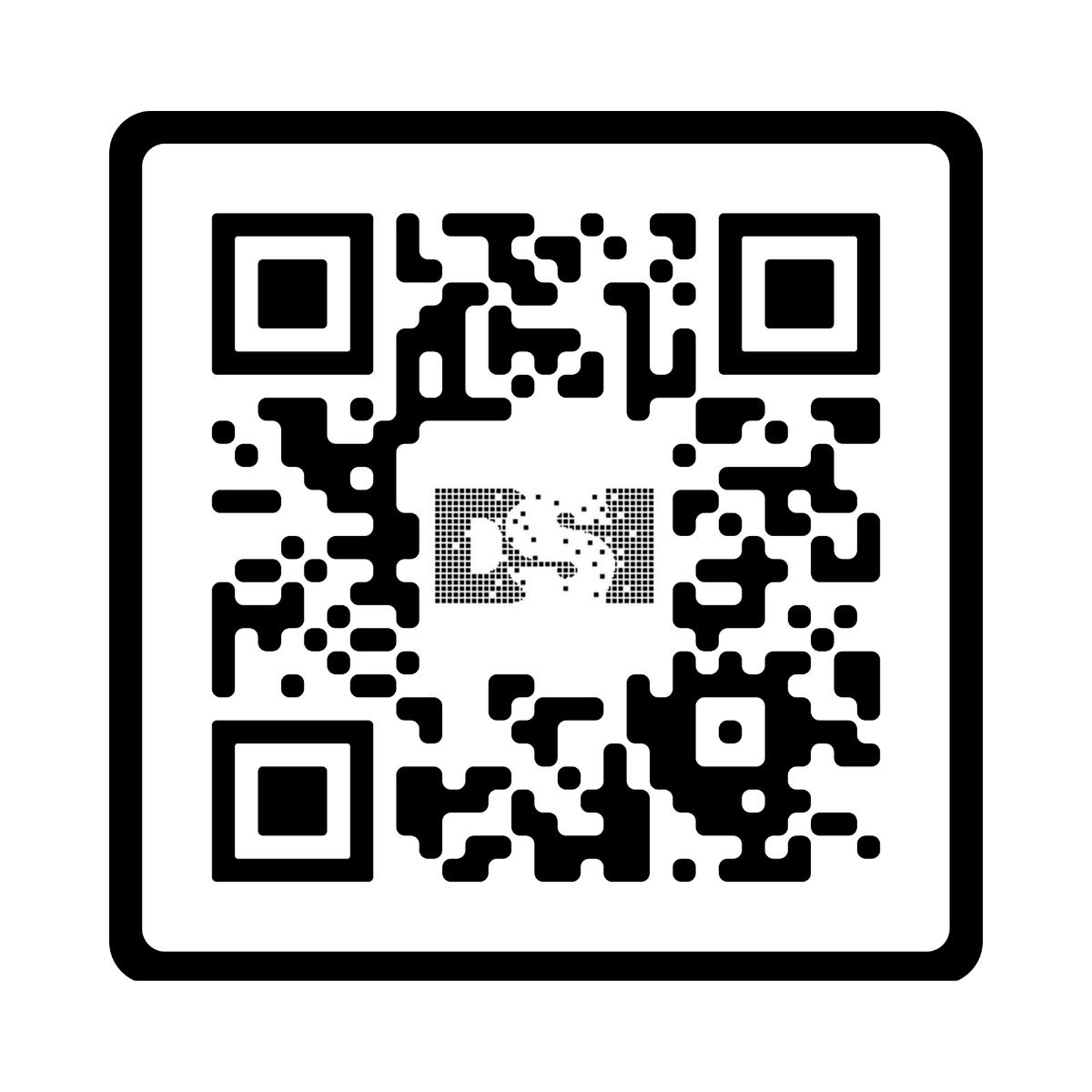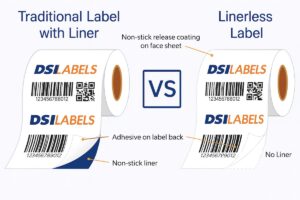🎧 Listen to this episode of the DSI Labels Podcast:
Understanding QR Code Labels and Their Customer Engagement Power
In just a few years, those pixelated squares once seen as tech novelties have transformed into essential marketing tools. From app store downloads, to mobile payments, we are now seeing the usage of QR codes across many industries. QR codes now serve as bridges connecting physical products to rich digital experiences. Recent data shows smartphone QR code scanning grew by 96% between 2022 and 2024, with consumers now expecting this seamless physical-to-digital transition.
When strategically incorporated into custom labels, QR codes create meaningful touch-points with customers at crucial moments during product use, when making repurchase decisions, or when they’re most receptive to your brand story. For businesses, these smart labels offer unprecedented opportunities to enhance customer relationships, gather valuable data, and create memorable brand interactions that traditional packaging simply can’t match.
What Makes QR Codes on Labels Different from Standard Barcodes
While traditional barcodes and QR codes both store information, the differences are substantial. Standard barcodes typically hold just 12-20 characters. Which is enough for a product identifier but not much else. QR codes can store thousands of characters, enabling them to contain website URLs, contact information, or even small multimedia files like restaurant menus. It was only a few years ago, when Covid locked down most businesses. But, those essential businesses like restaurants and businesses related to the medical industry, we allowed to remain open. Restaurants quickly scrambled, and figured out how to implement QR codes by integrating them with their website that was hosting their menu. Physician offices and medical offices were using QR codes for patients who were checking in for their appointments.
This expanded capacity allows QR code labels to serve as gateways to interactive content rather than just identification markers. Imagine including a QR code label or sticker on your product, that can link your customers to your website. Your website can host written material or a demonstration video that can explain how to use your product. Additionally, QR codes offer omnidirectional scanning (they can be read from any angle) and maintain functionality even when up to 30% damaged. This is ideal for labels that might face wear during shipping, high volume handling or exposed to other elements that might wear out the label.

Unlike rigid barcodes, QR codes can incorporate visual customization while maintaining functionality. Custom labels with branded QR codes, featuring logo integration or color schemes, create cohesive packaging that works harder for your brand without sacrificing utility.
The Psychology Behind Customer Interaction with QR Codes
Understanding why customers scan QR codes helps create more effective label strategies. The primary motivator? Curiosity combined with the promise of value. When customers see a QR code accompanied by an intriguing prompt, they’re naturally drawn to discover what awaits on the other side.
“Could this be a discount code or coupon… Let’s check and see!”
This curiosity-satisfaction loop creates a memorable moment with your brand. Research shows that 72% of consumers are more likely to remember products that offered interactive experiences through packaging. (Have you ever received one of those greeting cards that plays music when you open the card?) The instant gratification of immediate access to information or rewards also plays a significant role in positive brand association.
Smart brands leverage this psychology by ensuring QR code interactions feel rewarding. Whether through useful information, entertainment, or tangible benefits like discounts, the post-scan experience must justify the customer’s effort and reinforce their decision to engage with your product.
Types of QR Codes for Different Label Applications
The choice between static and dynamic QR codes represents a crucial decision for your label strategy. Static codes contain fixed information that cannot be altered after printing, this would be ideal for unchanging content like nutritional facts or instruction manuals. Dynamic codes, though, point to a customizable URL/website that can be updated without reprinting labels, allowing content flexibility and detailed tracking capabilities.
Industry-specific applications demonstrate this versatility:
- Food and beverage brands use QR codes to share sourcing information and recipes
- Electronics products link to setup guides and warranty registration
- Cosmetics connect customers to ingredient details and application tutorials
- Pharmaceuticals provide dosage instructions and side effect information
Size considerations matter too. For small containers, micro QR codes maintain functionality while occupying minimal space. For maximum scannability across various lighting conditions, black codes on white backgrounds still perform best, though high-contrast color combinations (dark blue on light yellow, for example) can maintain functionality while supporting brand aesthetics.
Strategic Ways to Use QR Codes on Custom Labels
Product Authentication and Anti-Counterfeiting Solutions
Counterfeiting impacts nearly every industry, with global losses estimated at over $500 billion annually. QR code labels offer sophisticated authentication solutions that simultaneously protect brands and build consumer trust.
These authentication systems work through unique identifiers embedded in each QR code, allowing customers to verify product legitimacy instantly. Luxury brands like Louis Vuitton have pioneered this approach, with each product carrying a verification code customers can scan. Similarly, pharmaceutical companies use serialized QR codes to confirm medication authenticity, literally life-saving application.
For smaller businesses, implementing such systems has become increasingly accessible. Cloud-based verification platforms now offer subscription services that generate unique codes for your custom labels, requiring minimal technical integration while providing robust protection.
But it’s good to know, QR codes have also been known to be used maliciously with scammers. Recently several news outlets have reported victims were scammed by a fake QR code sticker that was placed over the original QR code at a parking lot. The scammer was able to create their own QR code that linked to their payment portal. So when an unsuspected victim was trying to pay for their parking, those funds went to the scammers pockets, and not the parking lot company.
Turning Packaging into an Interactive Customer Experience
The limited space on product packaging has always constrained what brands can communicate. QR code labels effectively remove these limitations by connecting customers to rich, multimedia experiences. I still remember as a kid, Christmas morning would include a messy floor of opened gifts, a pile of torn up wrapping paper, and a stack of thick manuals for my dad to read so he can assemble my new toys.
Kitchen appliance manufacturers now include QR codes linking to video demonstrations, transforming basic instruction manuals into comprehensive tutorials. Food products use codes to share chef-created recipes using the product, extending its perceived value. Beauty brands connect customers to makeup tutorials featuring the exact shade they purchased.
Perhaps most impressively, augmented reality experiences triggered by QR codes can transform packaging into entertainment. Wine labels that animate to tell the vineyard’s story or toy packaging that previews the assembled product in 3D represent the cutting edge of this technology.
Loyalty Programs and Exclusive Content Access
Customer retention costs significantly less than acquisition, making loyalty initiatives crucial for sustainable growth. QR code labels create friction-less entry points to these programs without requiring separate loyalty cards or lengthy sign-up processes.
Smart brands create members-only digital spaces accessible through product packaging. These exclusive environments might offer early access to new products, behind-the-scenes content, or special promotions that reward continued engagement.
Gamification elements further enhance engagement, a beverage company might encourage customers to collect points by scanning codes from different varieties, rewarding completion with merchandise or discounts. This approach transforms routine purchases into treasure hunts, adding an element of play to consumer relationships.
Streamlining Reordering and Repurchase Pathways
The moment a customer finishes your product represents a critical decision point, will they repurchase or try a competitor? QR code labels create immediate pathways to replenishment that capture customers at this crucial moment and strike while the iron is hot!
One-click reordering systems accessible through QR codes significantly reduce friction in the repurchase journey. Coffee brands, for example, have seen subscription enrollment increase by up to 28% after implementing QR codes on packaging that lead directly to personalized subscription options. This can apply to many other products like refrigerator water filters, ink cartridges, vitamins or nutraceuticals, and even toiletries.
These systems can intelligently recommend related products based on purchase history or seasonal relevance, expanding customer lifetime value through contextual suggestions. The direct line from physical product to digital cart also provides valuable data on repurchase timelines and patterns, informing inventory management and marketing strategies.
Design and Production Best Practices for QR Code Labels
Balancing Brand Aesthetics with QR Code Functionality
The technical requirements of QR codes need not compromise your brand identity. Modern QR generation algorithms allow for up to 30% of the code to be customized without losing functionality, creating opportunities for logo integration and creative design.
Placement decisions significantly impact scanning rates. Eye-tracking studies show that positions near product information or opening mechanisms perform best. The code should appear where customers naturally look or handle the product, with sufficient space around it to avoid confusion with other design elements.
Size guidelines vary by expected scanning distance: for products typically held in hand, codes should measure at least 1.2 cm square. For products likely to be scanned from further away (posters, larger packages), size should increase proportionally, with 2.5 cm as a minimum for distances beyond arm’s length.
Material Selection for Different Applications
The physical environment where your product exists dictates label material choices. Outdoor products require UV-resistant, weatherproof materials like vinyl or polyester with protective laminates that prevent fading and water damage. Without these protections, QR functionality can degrade over time, creating frustrating customer experiences.
For food and beverage applications, FDA-compliant materials are essential, with consideration for temperature exposure during both processing and consumer use. Cold-chain products need adhesives that maintain integrity in refrigerated or frozen environments.
Sustainability concerns have driven innovation in eco-friendly QR code labels. Options now include biodegradable materials, recycled content papers, and water-soluble adhesives that support environmentally conscious brand positioning without compromising scan reliability.
Quality Control in QR Code Label Printing
Even perfect design can fail without rigorous printing quality control. Common issues include insufficient contrast, bleeding ink that obscures the code pattern, and improper quiet zone spacing around the code. These problems often become apparent only after production, making pre-production testing essential.
Professional label printing services offer specialized equipment calibrated specifically for QR code precision. While potentially more expensive than general printers, these services typically include quality assurance processes that test scan functionality across multiple devices and lighting conditions.
For brands managing label production in-house, investing in verification systems that check each code against international standards for error correction levels can prevent costly reprints and customer frustration. Regular maintenance of printing equipment ensures consistent quality, particularly for larger production runs.
Measuring and Optimizing QR Code Campaign Success
Key Metrics to Track for QR Code Engagement
Effective measurement transforms QR code labels from marketing tactics to strategic assets. Beyond basic scan counts, sophisticated analytics reveal patterns that inform broader business decisions.
Scan-through rates (the percentage of product purchasers who actually scan the code) provide insight into how compelling your call-to-action messaging is. Time and location data reveal when and where customers engage most frequently. Information that can optimize everything from social media posting schedules to retail display positioning.
Conversion tracking from initial scan to desired action (purchase, subscription, information download) helps quantify ROI and identify friction points in the customer journey. These insights allow for continuous refinement of both the digital experiences and the physical label design that initiates them.
A/B Testing Strategies for QR Code Labels
With any type of marketing, systematic testing dramatically improves performance over time. Call-to-action phrases show particularly high variance in effectiveness: “Scan for exclusive content” typically outperforms “Scan for more information” by margins exceeding 30%, while specific benefit mentions (“Scan for 15% off your next purchase”) can double engagement rates compared to generic prompts.
Physical attributes warrant testing too. Placement position (front panel vs. side panel, top vs. bottom) often reveals customer handling patterns specific to your product category. Size variations, while constrained by minimum requirements for scanability, can determine whether your code feels like an integral design element or an afterthought.
The most sophisticated testing programs simultaneously evaluate both physical label elements and the digital experiences they unlock, ensuring consistency in messaging and visual language across the physical-digital divide. Companies like Bitly.com offer solutions that can assist with the creation of QR codes. They will also track, test and provide valuable information to your company.
Evolving Your QR Strategy Based on Customer Behavior
The true power of QR code labels emerges through continuous evolution informed by customer interaction data. Brands that regularly refresh digital content based on engagement patterns see sustained scan rates, while static offerings typically experience declining engagement after initial curiosity fades.
Seasonal adaptations, like updating linked content to reflect holiday themes or current events without changing physical packaging, demonstrate the flexibility dynamic QR codes offer. Demographic insights derived from interaction data enable increasingly personalized experiences, such as serving different content to new scanners versus returning customers.
This evolutionary approach transforms QR code labels from one-time novelties into ongoing conversations with customers, building relationships through responsive, relevant engagement that static packaging cannot achieve.
The Future of Customer Connections Through Smart Labels
As QR code adoption continues to accelerate, custom labels incorporating this technology are becoming expected rather than exceptional. Brands that integrate these smart touchpoints thoughtfully, with attention to both technical functionality and customer psychology. Gain advantages in engagement, loyalty, and data collection.
Start with clearly defined objectives rather than implementing QR codes simply because competitors have. Even small-scale implementations, when designed with specific customer needs in mind, can deliver impressive returns on modest investments. Whether facilitating product authentication, extending brand storytelling, or streamlining repurchase, QR code labels have evolved from marketing gimmick to strategic asset.
The question is no longer whether to incorporate this technology into your packaging strategy, but how to implement it most effectively for your unique brand context. In the marriage between physical products and digital experiences, smart labels serve as the essential introduction. Make yours memorable!
Ready to explore how custom QR code labels can transform your customer relationships? Contact our label specialists today 714-505-1270 for a consultation tailored to your specific product and brand needs.





